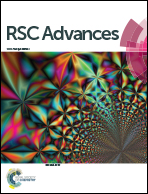Systemic responses of weaned rats to spermine against oxidative stress revealed by a metabolomic strategy
Abstract
Many factors can induce oxidative stress in livestock production. Such stress results in damage to cellular antioxidant defense, suboptimal livestock health conditions, and decrease in production efficiency. Spermine supplementation is known to have the potential to mitigate the effects of oxidative stress. However, the systematic changes in metabolic biochemistry associated with oxidative stress and spermine intervention remain largely unknown. This study aims to investigate the effects of oxidative stress and spermine supplementation on the metabolism of weaned rats. Rats received intragastric administration of either 0.4 μmol g−1 body weight of spermine or saline solution for 3 days. The rats in each treatment were then intraperitoneally injected with diquat at 12 mg kg−1 body weight or sterile solution. The 24 h urine and 48 h plasma samples after the last spermine ingestion were analyzed by using nuclear magnetic resonance-based metabolomics. Spermine supplementation and diquat injection can change common systemic metabolic processes, including lipid metabolism, glucose and energy metabolism, amino acid metabolism, as well as gut microbiota functions. Moreover, diquat can induce oxidative stress and alter bile acid metabolism. Under oxidative stress, spermine supplementation could partially counteract the metabolite changes induced by oxidative stress, including amino acid metabolism and lipid metabolism. This study demonstrates the importance of spermine supplementation in regulating the metabolism of weaned rats.


 Please wait while we load your content...
Please wait while we load your content...